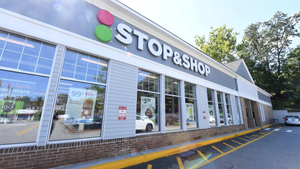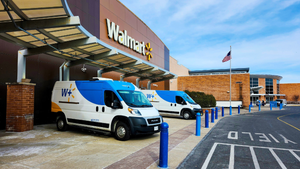A forum for contributed pieces from industry thought leaders, retailers, wholesalers and manufacturers. The views expressed are those of the authors.
Is ‘Unified Commerce’ the next big buzzword?Is ‘Unified Commerce’ the next big buzzword?
Everyone wants an end to the silos. This may be the answer

You can’t read an article, blog post or listen to a podcast in grocery retail right now without having AI or retail media in the headline. Could “Unified Commerce” soon take over? Let’s dig a bit deeper and take a look.
It certainly makes a lot of sense and something I have been talking about for a very long time except I’ve been calling it the Digital Ecosystem. I think I like Unified Commerce a bit better as it captures what is and what needs to happen in grocery and convenience retail in order to truly create an extraordinary customer and associate experience.
By definition, Unified Commerce is “a fully integrated approach to retail that connects all sales channels, backend systems, and customer touch points into a single platform. This allows businesses to manage inventory, orders, customer data, and transactions seamlessly across online and offline channels, providing a consistent and personalized shopping experience.”
Now you may be asking yourself how is this different than that other buzzword, “Omni-Channel.” That is a good question and let me explain. Unlike traditional omnichannel systems, which often operate in silos, unified commerce ensures real-time data sharing and a 360-degree view of customers and operations. This enables retailers to offer services like delivery, curbside pickup, buy-online-pick-up-in-store (BOPIS), cross-channel returns, and personalized marketing and loyalty all while improving operational efficiency.
The key phrase for me in the definition is …Transactions seamlessly across online and offline channels, providing a consistent and personalized shopping experience. No longer can you have a team solely focused on building a great website to increase online transaction, another team solely focused on an instore experience, and yet another for inventory management without collaboration.

I have a tremendous amount of respect for Tim Lowe the President of Lowes Foods and his team. I think he captures this philosophy well and has previously described it thusly: “Our GTM strategy is to be an entertainment company that intersects with people around great food experiences.” I believe he is describing a Unified Commerce or in this case “experience” for his customers and associates by viewing the digital and in-store shopper as one and by being able to utilize all digital tools no matter whether the customer is at home or in-store. It should be a unified experience.
As was recently written about in this very publication Supermarket News, 90% of shoppers participate in both online and in-store shopping. And additionally: that U.S. online sales for grocery are projected to reach $388 billion by 2027 according to FMI and NielsenIQ. They are projecting that U.S. online grocery sales will reach $388B by 2027 which will account for 25% of the overall grocery market. This is a huge increase over the last several years and shows that digital channels are not going anywhere.
It's imperative to note that almost 50% of the online grocery market is owned by Walmart (25.7%) and Amazon (22%). This is why it is more important than ever for both large and other regional grocers to innovate and have a true Unified Commerce strategy, one that will create a tremendous customer experience whether they are shopping online or in-store. Experiences will create true loyalty.
So how can other retailers create this experience? Here are some ideas:
Leaning into loyalty and personalization
Full understanding of customer needs and preferences. Centralize data from all channels to understand shopping habits, product preferences and purchase points
Leverage first party data centralization to offer tailored promos and personalized messaging
Maintain a consistent brand identity, messaging and customer service across all channels
Upsells—Offer a cup of coffee or candy for a curbside customer when they are leaving the house
Creating unique in-store experiences
Introduce digital into the physical store with mobile, ordering kiosks and digital signage
Shopping list guidance – Allow customers to plan their route around the store using your mobile app. Provide personalized recommendations along the way
Retail Media—Not just advertising but relevant offers and promotions that create a better customer experience while increasing revenue dollars.
Use centralized integrations
Integrate POS, CRM, eCommerce into a single platform for a unified view of customer and business data
Access to perpetual inventory will provide data across all channels to minimize out of stocks and enable proper messaging to customers when inventory is low
Order Management System (OMS) – Use your OMS as “air traffic control” for all of your order fulfillment based on inventory and labor constraints
And how about multiple fulfillment options?
Flexible options for express delivery, larger in-store/curbside pickup windows and ship to home to cater to all customer preferences at that particular time
Ensure seamless and convenient in-store or curbside pickup to ensure repeat customers and efficient associate experience
Utilize OMS for delivery orchestration to create most profitable and efficient delivery
All if this sounds great and it may not be as hard as you think. The first step is to stop thinking of your in-store customer vs your online customer and start treating them as one singular CUSTOMER. Provide them a great experience however they choose to order on that particular day. Want to chat more about the concept of United Commerce? Reach out to me on LinkedIn.
About the Author
You May Also Like






